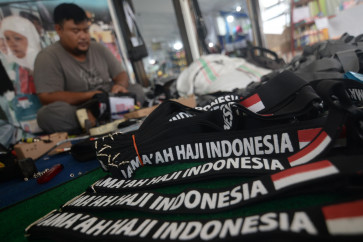Data and computational journalism key in the digital era
Thanks to the internet, anyone -- not just media that are true to journalistic ethics and standards –- can provide information accessible all over the globe anytime.
Change text size
Gift Premium Articles
to Anyone

I
n 2013, a database of shell corporations used by individuals, celebrities, criminals and multinational companies to evade taxes was released in public -- and went viral. This database, Offshore Leaks, was created by an international non-profit organization, International Consortium of Investigative Journalists, Inc. (ICIJ).
Offshore Leaks was born out of 2.5 million secret notes consisting of 750,000 names and corporations -- including government officials and even presidents -- involved in tax-evasion crimes. Offshore Leaks initiated cross-continent collaborative investigations that produced data-based investigation products like Panama Papers (2016), Bahama Leaks (2016), Paradise Papers (2017 and 2018) and Pandora Papers (2021).
The emergence of said investigative products shows that data-analysis skills and an ability to operate computer applications have a significant impact on creating a high-quality journalistic product. Databases have no meaning without the journalist’s skill in understanding and analyzing data.
Journalists, as cited on ICIJ’s website, conduct a data-journalism process that comprises cleaning the data, finding a connection between one table and the other, analyzing the data and creating an interactive-data-visualization dashboard using computer programs, from those as simple as Microsoft Excel up to online-interactive software or web tools like Talend Open Studio for Data Integration, MockFlow and Sigma.js.
Therefore, data and computational journalism exist to strongly support the journalistic principle of truth.
The journalistic truth, according to Bill Kovach and Tom Rosenstiel in The Elements of Journalism, is “a process that begins with a professional discipline to seek and verify data”. This principle is aligned with the news-making process using the data-journalism approach. News is not just produced by compiling words spoken by sources (talking news); rather, it involves data that has been cleaned, analyzed and visualized. The angle of the news can also be chosen through data-based approaches, such as scale, sequence or rank, and changes or explorative.
This truth-loaded basic principle of journalism has met with challenges, especially as journalism enters a period of digitalization and media convergence marked by the birth of the internet. Thanks to the internet, anyone -- not just media that are true to journalistic ethics and standards -- can provide information accessible all over the globe anytime. Therefore, information quality has become questionable, especially when delivered by individuals without any verification process and for the purpose of creating false news or information (hoax).
There are thousands of hoaxes recorded, especially during the COVID-19 pandemic. The Indonesian Anti-Slander Society (Mafindo) revealed that there were up to 1,888 cases of hoaxes in 2021, with a significant increase especially when it came to vaccine-related hoaxes.
The nature of the internet, which allows information delivery within seconds, causes hoaxes to be easily consumed and distributed to a wider public. The influx of information without its verified truth causes a critical situation called an infodemic. In this situation, data and computational journalists are needed as the antithesis to information that has yet to be verified.
To produce data and computational-journalism products, media need to increase their journalists’ capacity to understand data and operate computer software and web applications.
The improvement in journalists’ skill would be a certain outcome, since data have become something very common in the government or other organizations. During the pandemic, we can see how journalists deal with figures in government reports on a daily basis.
Sometimes the government data are laid out in detail, but it is not rare for the published data to go through a filtering process. In other words, only part of the information is shown.
Therefore, journalists need to be able to read data so they are not misled by it or its inaccurate visualization. Data journalism is the solution.
The arrival of data journalism in Indonesia was marked by the Indonesia Data Driven Journalism event in 2016, supported by organizations like the Alliance of Independent Journalists (AJI), One Data Indonesia and the Indonesian Network for Investigative Journalism (JARING) to urge data disclosure from the government.
In addition to AJI, the Data Journalism Network or IDJN (2018), Journcoders Indonesia (2018) and Tempo Institute (2020) have contributed to the development of data and computational journalism in Indonesia via data-based workshops or project collaborations.
Aside from workshops, data and computational journalism conferences also play a role in upgrading journalists’ capacity. A survey titled State of Data Journalism Survey 2021: 11 surprising findings revealed that 70 percent of 1,258 respondents admitted to studying data journalism by themselves. This reveals a great willingness to learn data journalism, which can be accessed in workshops, seminars or conferences, be they online or offline.
It is not surprising that a data and computational conference of great magnitude like the NICAR Conference fronted by the National Institute for Computer-Assisted Reporting (NICAR) and Investigative Reporters and Editors (IRE) in the United States, for instance, garnered so much attention and enthusiasm from media.
Data and Computational Journalism Conference Indonesia (DCJ-CI) 2022 is here to answer the aforementioned needs, especially after observing the development of the situation in Indonesia. Through various seminars, workshops and networking sessions, participants are able to learn from the experts how to utilize technology to process data or listen to how national or international-media editors apply data-journalism methods.
In the future, we hope that this can move journalism forward in a better direction -- one that is both responsible and accurate -- just like the basic principles as stated by Kovach and Rosenstiel.
***
The writer is project officer of Data and Computational Journalism Conference Indonesia 2022 and data-driven storytelling professor at Media Nusantara University, Serpong, Banten.









